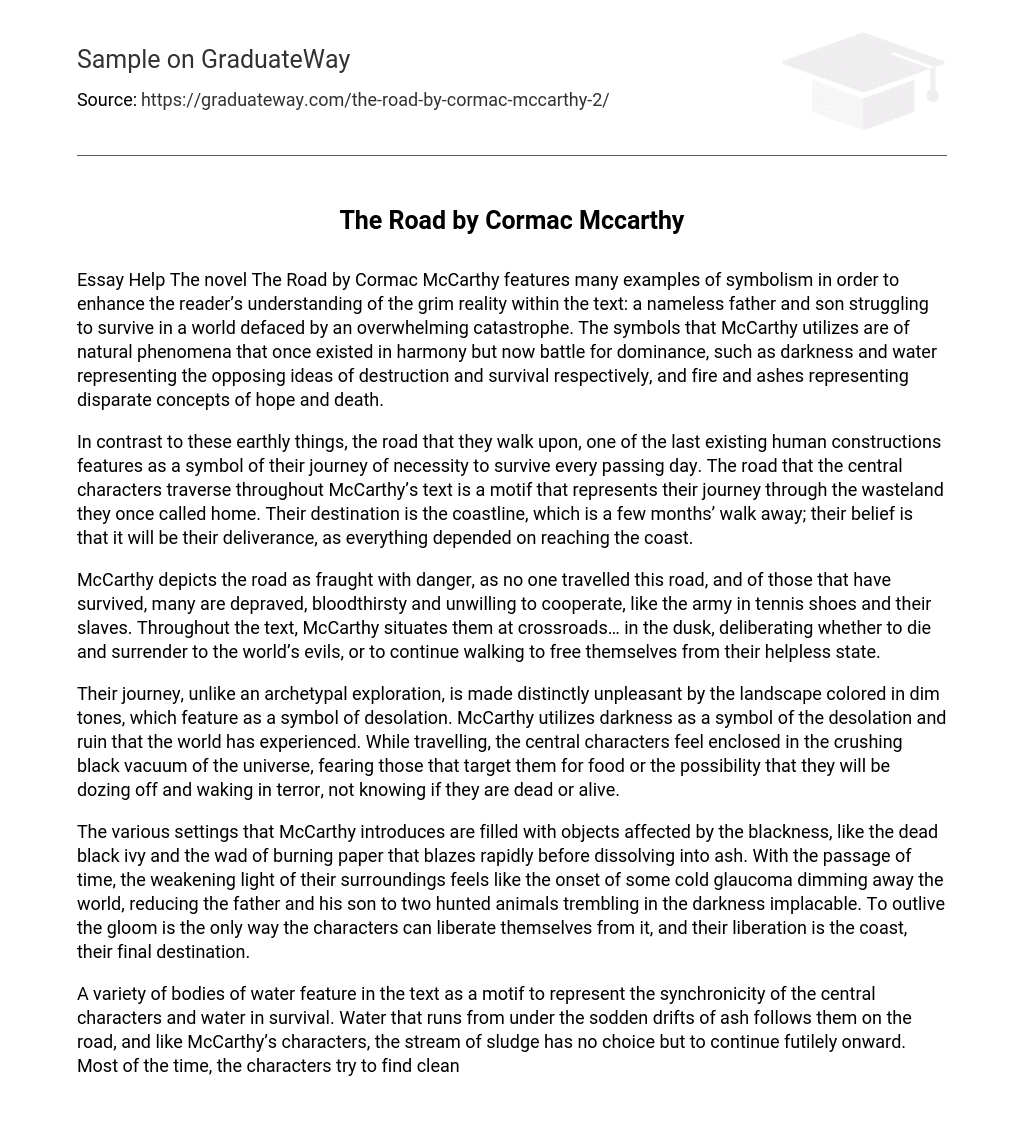Essay Help The novel The Road by Cormac McCarthy features many examples of symbolism in order to enhance the reader’s understanding of the grim reality within the text: a nameless father and son struggling to survive in a world defaced by an overwhelming catastrophe. The symbols that McCarthy utilizes are of natural phenomena that once existed in harmony but now battle for dominance, such as darkness and water representing the opposing ideas of destruction and survival respectively, and fire and ashes representing disparate concepts of hope and death.
In contrast to these earthly things, the road that they walk upon, one of the last existing human constructions features as a symbol of their journey of necessity to survive every passing day. The road that the central characters traverse throughout McCarthy’s text is a motif that represents their journey through the wasteland they once called home. Their destination is the coastline, which is a few months’ walk away; their belief is that it will be their deliverance, as everything depended on reaching the coast.
McCarthy depicts the road as fraught with danger, as no one travelled this road, and of those that have survived, many are depraved, bloodthirsty and unwilling to cooperate, like the army in tennis shoes and their slaves. Throughout the text, McCarthy situates them at crossroads… in the dusk, deliberating whether to die and surrender to the world’s evils, or to continue walking to free themselves from their helpless state.
Their journey, unlike an archetypal exploration, is made distinctly unpleasant by the landscape colored in dim tones, which feature as a symbol of desolation. McCarthy utilizes darkness as a symbol of the desolation and ruin that the world has experienced. While travelling, the central characters feel enclosed in the crushing black vacuum of the universe, fearing those that target them for food or the possibility that they will be dozing off and waking in terror, not knowing if they are dead or alive.
The various settings that McCarthy introduces are filled with objects affected by the blackness, like the dead black ivy and the wad of burning paper that blazes rapidly before dissolving into ash. With the passage of time, the weakening light of their surroundings feels like the onset of some cold glaucoma dimming away the world, reducing the father and his son to two hunted animals trembling in the darkness implacable. To outlive the gloom is the only way the characters can liberate themselves from it, and their liberation is the coast, their final destination.
A variety of bodies of water feature in the text as a motif to represent the synchronicity of the central characters and water in survival. Water that runs from under the sodden drifts of ash follows them on the road, and like McCarthy’s characters, the stream of sludge has no choice but to continue futilely onward. Most of the time, the characters try to find clean water to drink, and rarely do they find water so sweet that [the father] could smell it. McCarthy also describes water as something to be feared, because if they got wet they would probably die.
The quality of the water around the characters reflects their current state, as near their journey’s end when they encounter a bridge [lying] collapsed in the slow moving water, the father’s health declines precipitously. Their desperation to survive, however, is the driving force behind their every footstep. Fire symbolically represents the power of resilience in survival and the inherent risk of continued existence. It brings heat and light to banish the night’s dark beyond darkness and neutralizes the despair brought by the dark.





